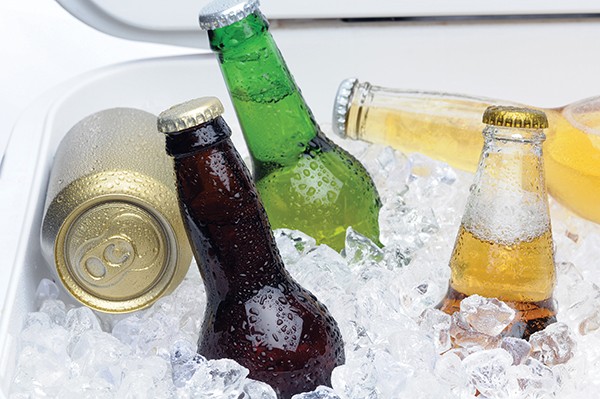I distinctly remember visiting my twin brother at Ole Miss to see him and his friends with their hands crammed into coolers, spinning cans of beer in the ice. The trick was a new one to me at the time, because in Tuscaloosa you could buy cold beer, while in Oxford you had to buy it off the shelf. The whole point of the exercise was to bring the temperature of the beer down as quickly as possible. This was necessary because if you serve anything cold enough, your sense of taste is dulled. Given what we drank back then, the colder the better.
The trick did actually work — sort of — but it was also a lot of trouble. I drank whiskey.
The first time I went to the U.K., long before craft beer was a thing in the South, I was warned that the Brits drank warm beer. What I found was that their ales weren’t warm, they just weren’t ice cold like in America. Being a hell of a lot better than anything that I’d had at home, they didn’t have to be.
The same is true for wine: Temperature matters, a lot, in both storage and serving, so you want to get your numbers right. With whites and Champagnes, if you are drinking the stuff that gets served at typical fund-raisers or huge New Year’s Eve parties, like cheap beer, the colder the better.
Go up the ladder a bit to a nice Sauvignon Blanc, and you want to be a little more careful. If you don’t have a temperature-controlled storage, you’re fine keeping the whites in the fridge, but take the bottle out of the fridge about 15 minutes or so before serving. What you are shooting for is about 50o F — where it’ll still have a good chill, but the tastes will come alive.
 Steven Cukrov | Dreamstime
Steven Cukrov | Dreamstime
Another one you want to keep in the fridge is Vermouth, which is a fortified wine, not a liquor. This is crucial. One reason we like those bitingly cold martinis is because most of us make the classic cocktail with vermouth that has gone off. It’s sort of like making a chocolate shake with sour milk. Fresh vermouth tastes completely different than what you are likely getting at a bar. Keep it in the fridge and throw it out after a few weeks.
Conventional wisdom holds that reds, on the other hand, work best served at room temperature. But remember the people who came up with that rule lived in drafty chateaux (or a drafty hovels) long before central heating. They wore heavy, form-fitting wool clothes that made everyone their own portable space heater. To that lot, room temperature wasn’t 74o F but somewhere between 60 and 65 degrees. Which is a pretty drastic swing. If you want to throw the red in the fridge for a few minutes before serving, that’s fine.
Do be careful; what wine really likes is consistency. Trying to chill wine quickly in the freezer is a bad idea. In fact, a drastic swing in any direction is bad. If you overdo it and decide to rewarm the bottle quickly, the wine will likely get some strange thoughts at odds with what the winemaker intended.
If you are really into it, and the above sounds fraught with peril, you can get a “wine cellar” that is no larger than a dorm-room fridge and costs about the same. It takes out the guesswork.
On the other end of the thermometer is Sake, which is supposed to be served warm, specifically at 98.4 degrees. Admittedly, I only know this from repeated childhood viewings of You Only Live Twice. I don’t claim to be a Sake expert, but years ago an undergrad with two very cold hands and a pair of almost-warm beers assured me that this was, in fact, true.